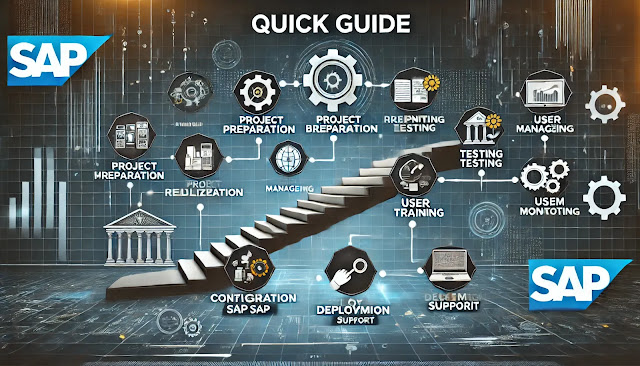The implementation of an SAP system involves several phases that ensure the smooth integration of SAP modules into your business operations. Below is a detailed breakdown of the key activities and tasks involved:
1. Project Preparation
The first phase focuses on laying the groundwork for a successful SAP implementation.
- Define project scope, objectives, and deliverables.
- Create a comprehensive project plan and timeline.
- Identify key stakeholders and form the project team to ensure seamless collaboration.
2. Business Blueprint
In this phase, business requirements are gathered and documented.
- Conduct requirement gathering sessions with business users to understand their needs.
- Align business processes with SAP best practices to optimize workflows.
- Prepare the Business Blueprint document for sign-off, ensuring all requirements are captured.
3. Realization
The realization phase is where SAP modules are configured and customized.
- Configure SAP modules according to the specifications outlined in the Business Blueprint.
- Develop any custom enhancements and interfaces to meet specific business requirements.
- Perform unit testing to validate the configuration and ensure accuracy.
4. Final Preparation
As the go-live date approaches, preparation intensifies to ensure everything is in place.
- Conduct end-user training sessions and create training materials to equip users with the necessary skills.
- Execute comprehensive testing (integration, user acceptance, and performance) to ensure system readiness.
- Prepare for data migration and cutover activities to transition smoothly to the production environment.
5. Go-Live and Support
This is the phase where the system goes live, and ongoing support is crucial.
- Execute the cutover plan and migrate data to the production environment.
- Monitor system performance post-go-live and promptly address any issues.
- Provide hyper-care support to ensure smooth operations and resolve any immediate challenges.
These key activities ensure that your SAP system is implemented effectively, delivering value and enhancing business processes from day one.

.%20The%20image%20fe.webp)
%20Workflow%20in%20SAP%20GRC%20for%20simplifying%20access%20request%20manage.webp)





No comments:
Post a Comment